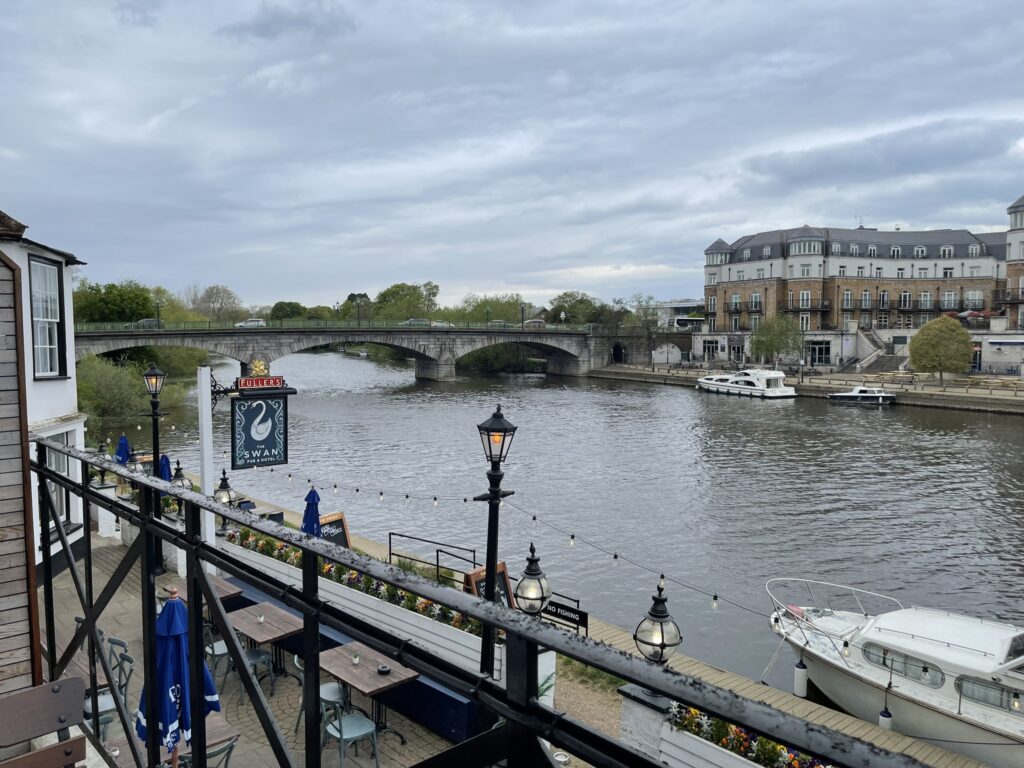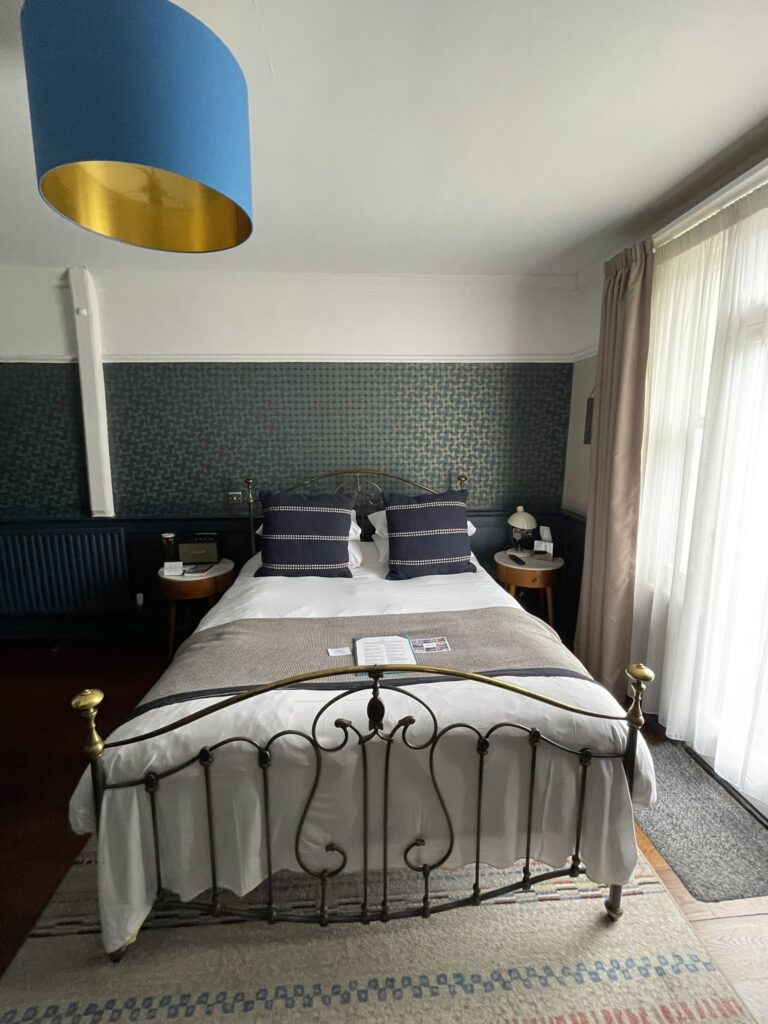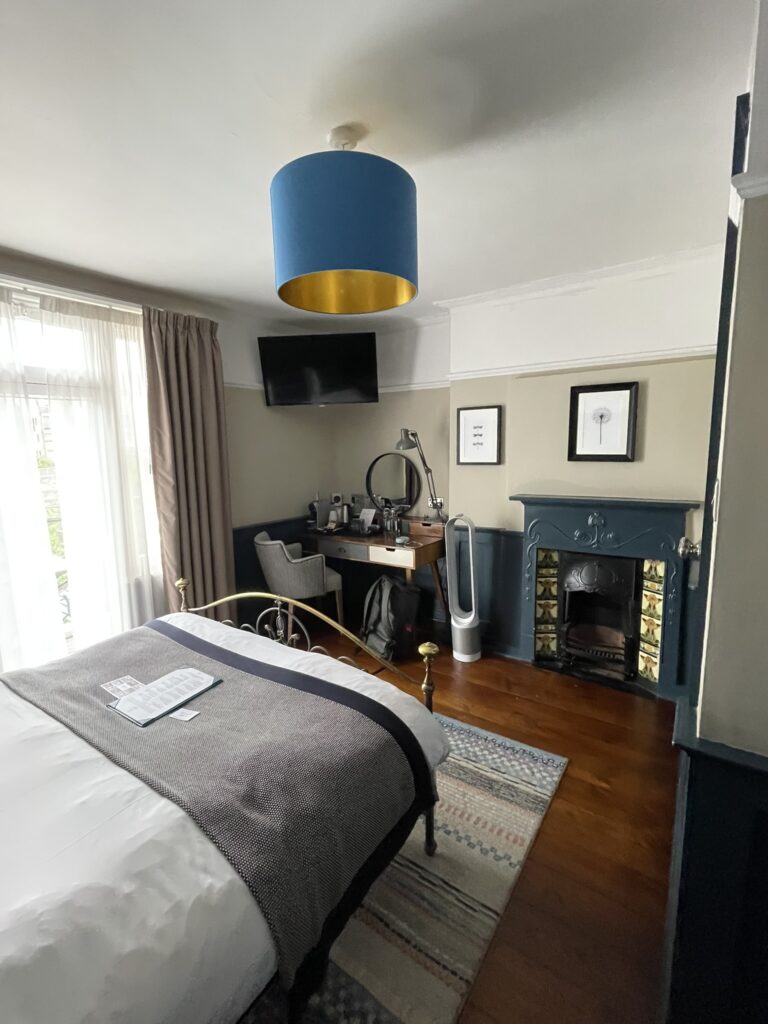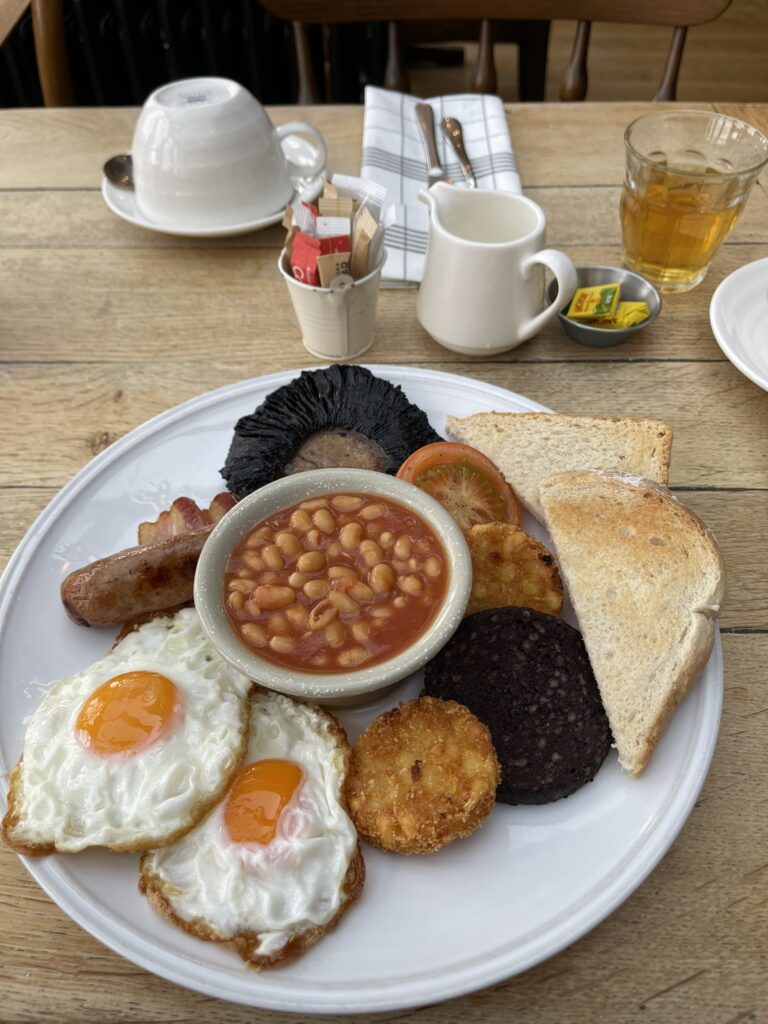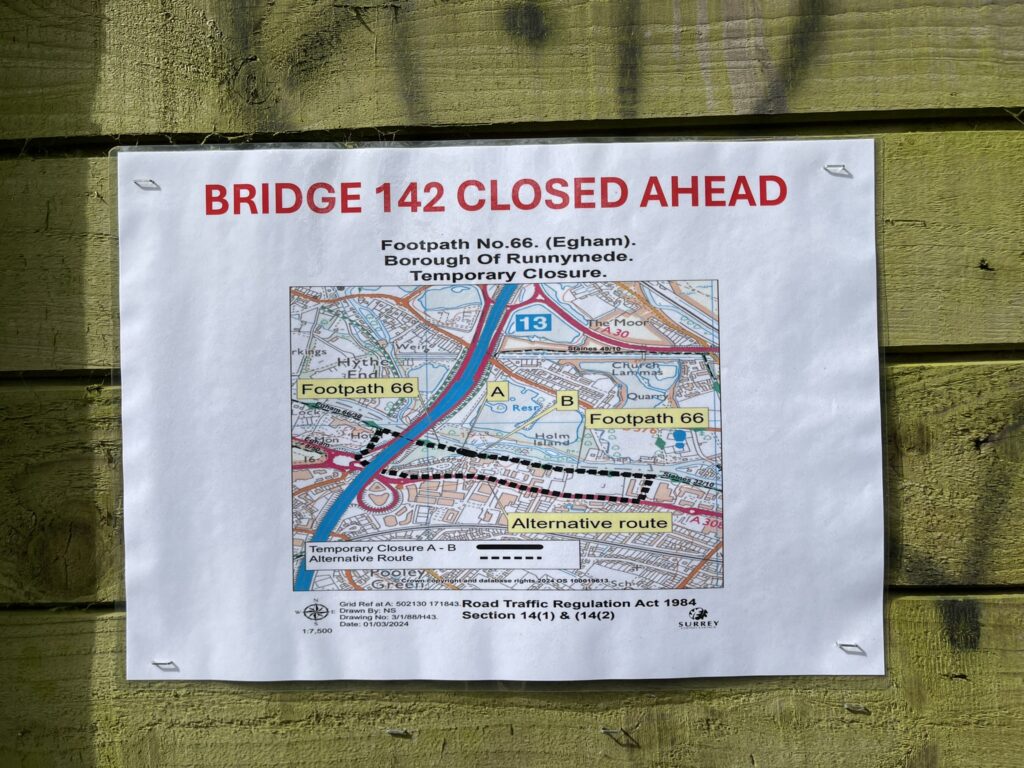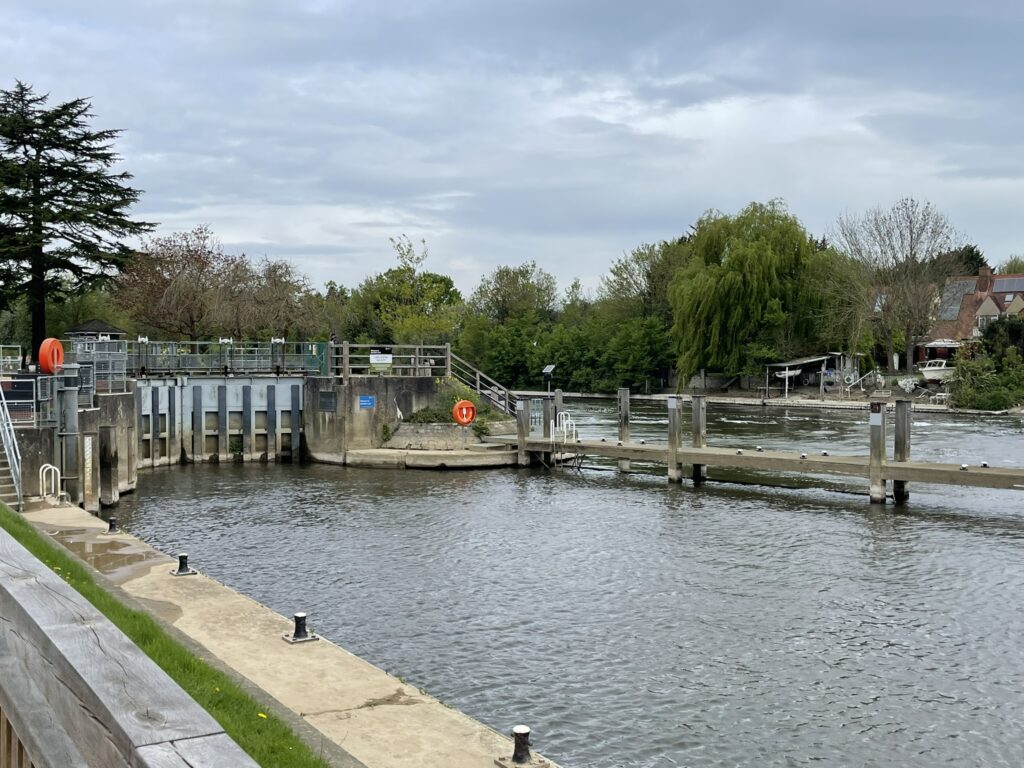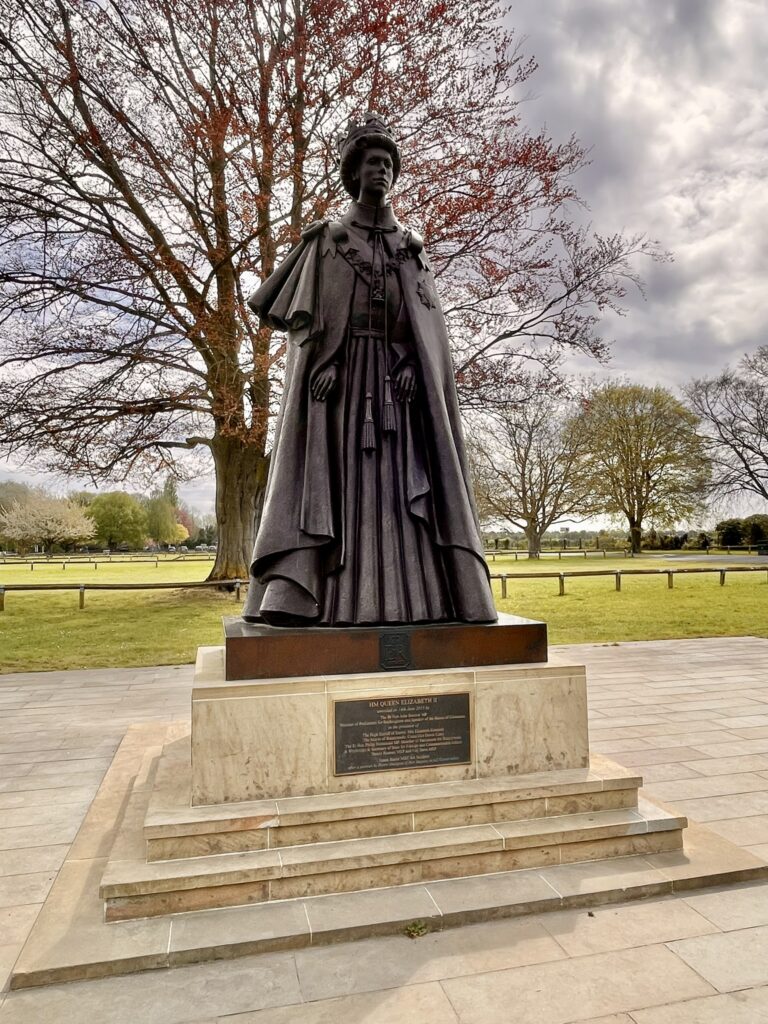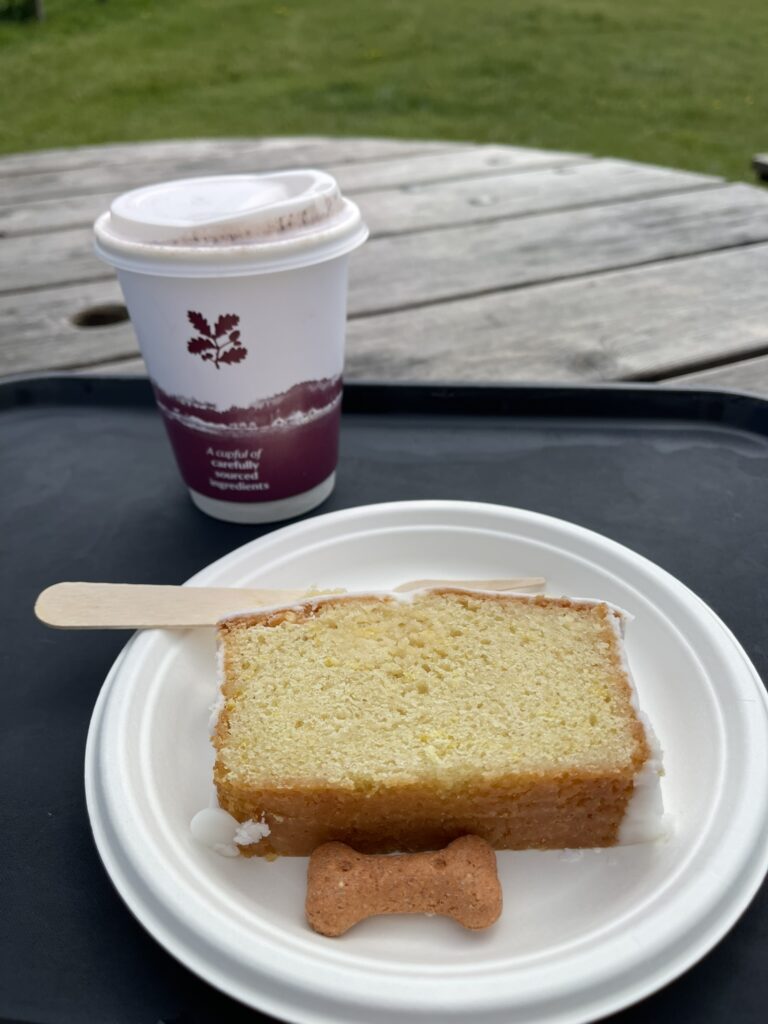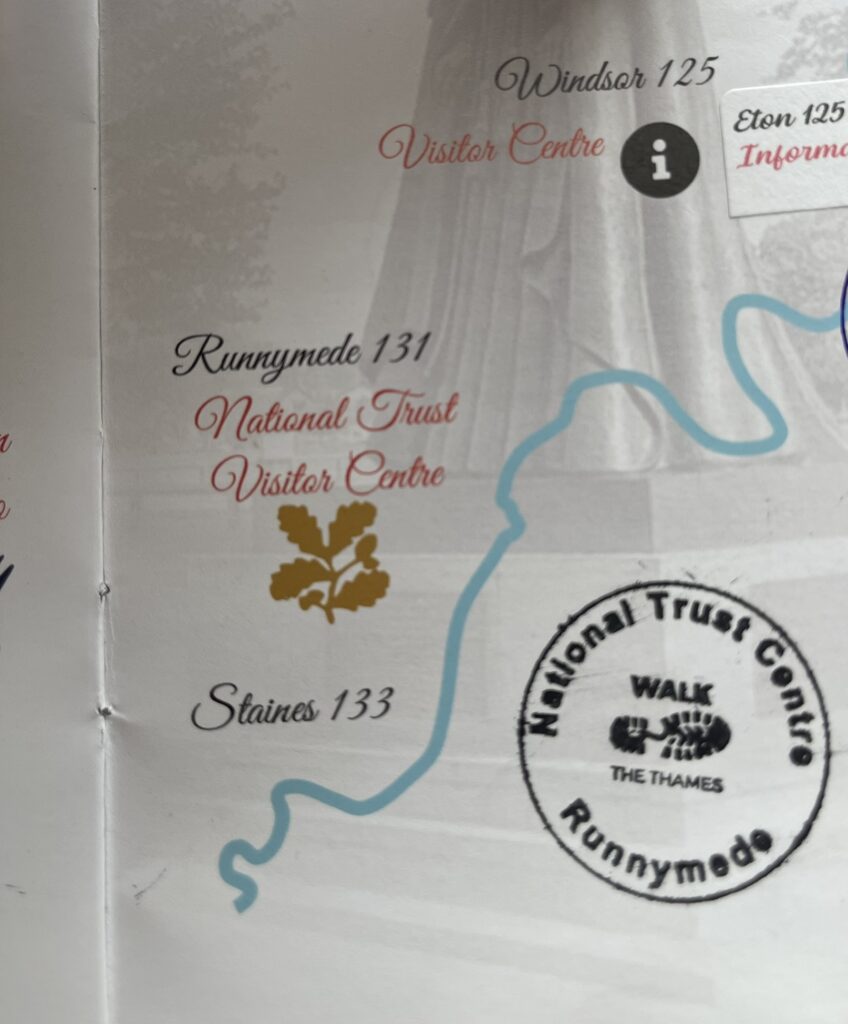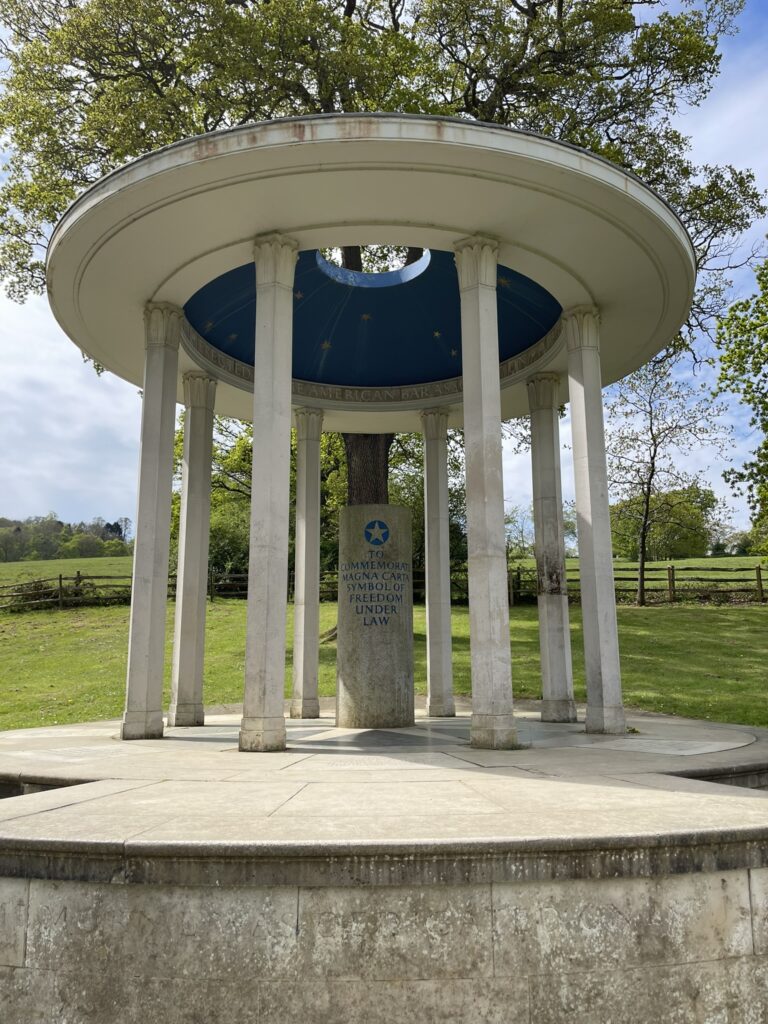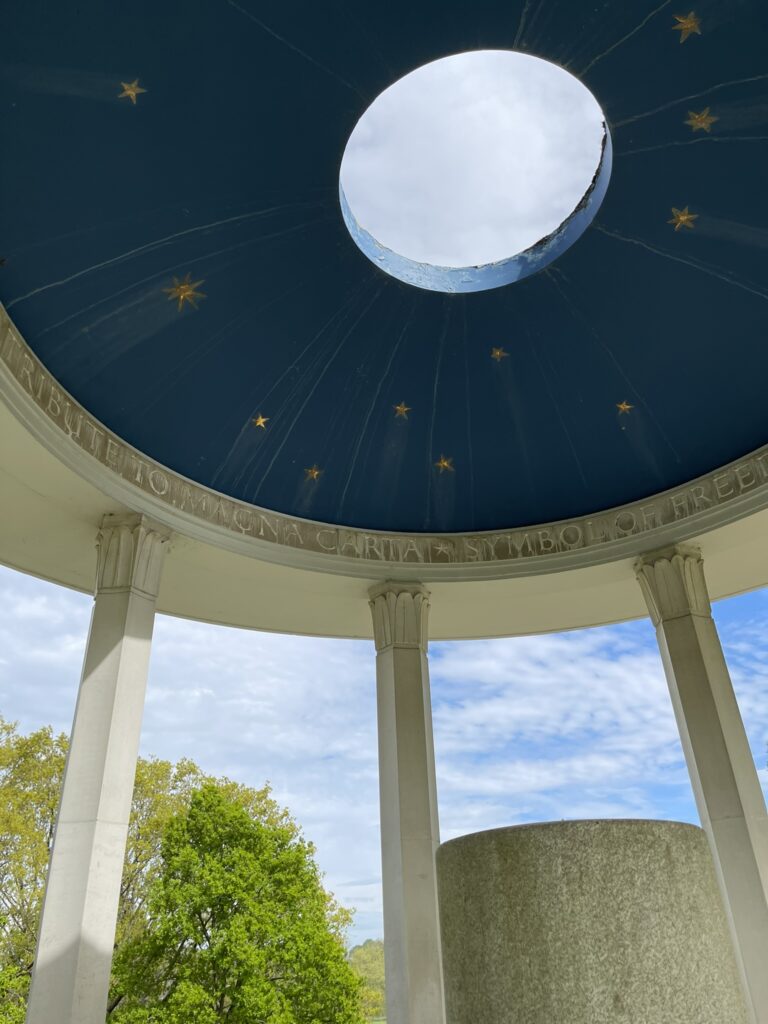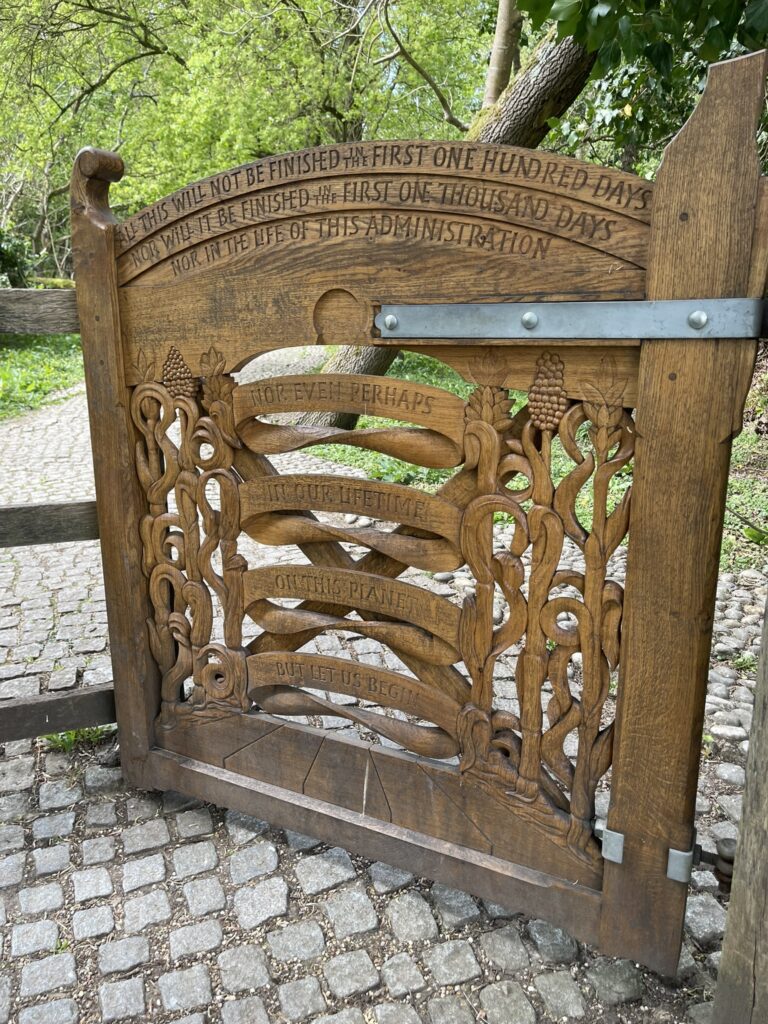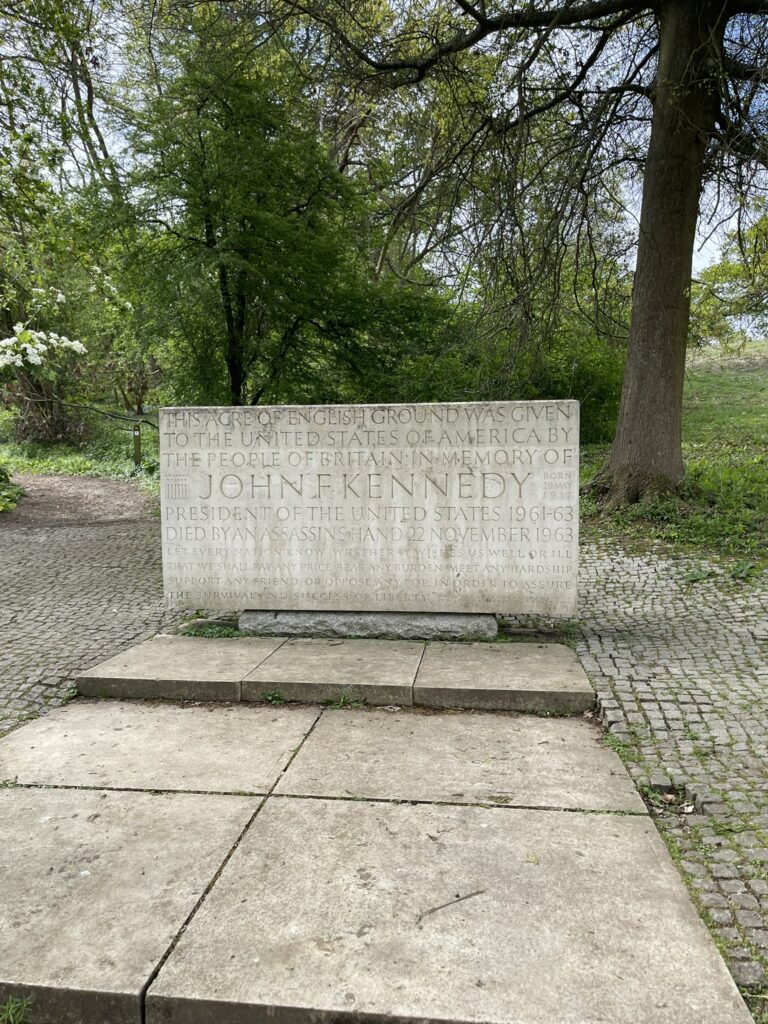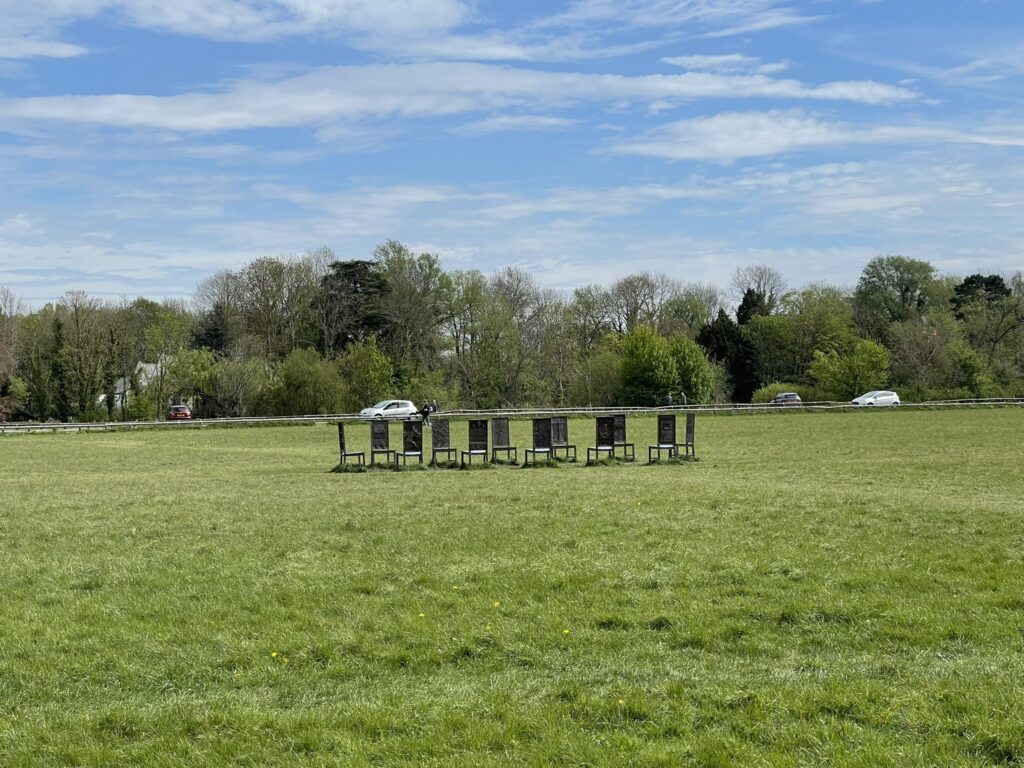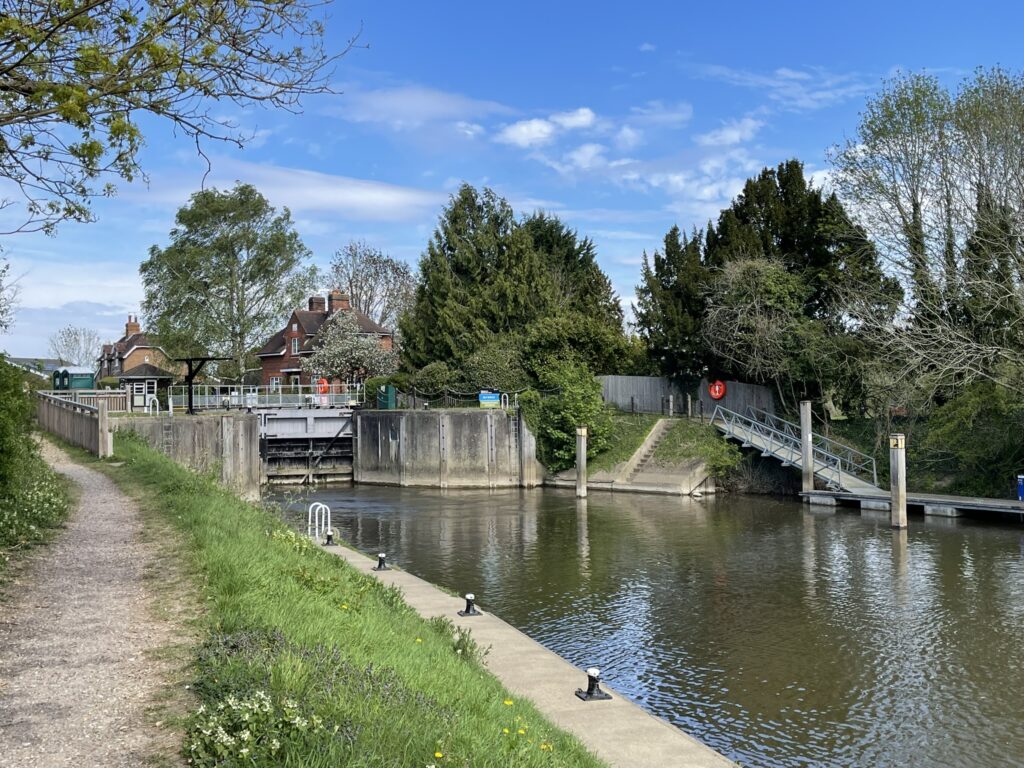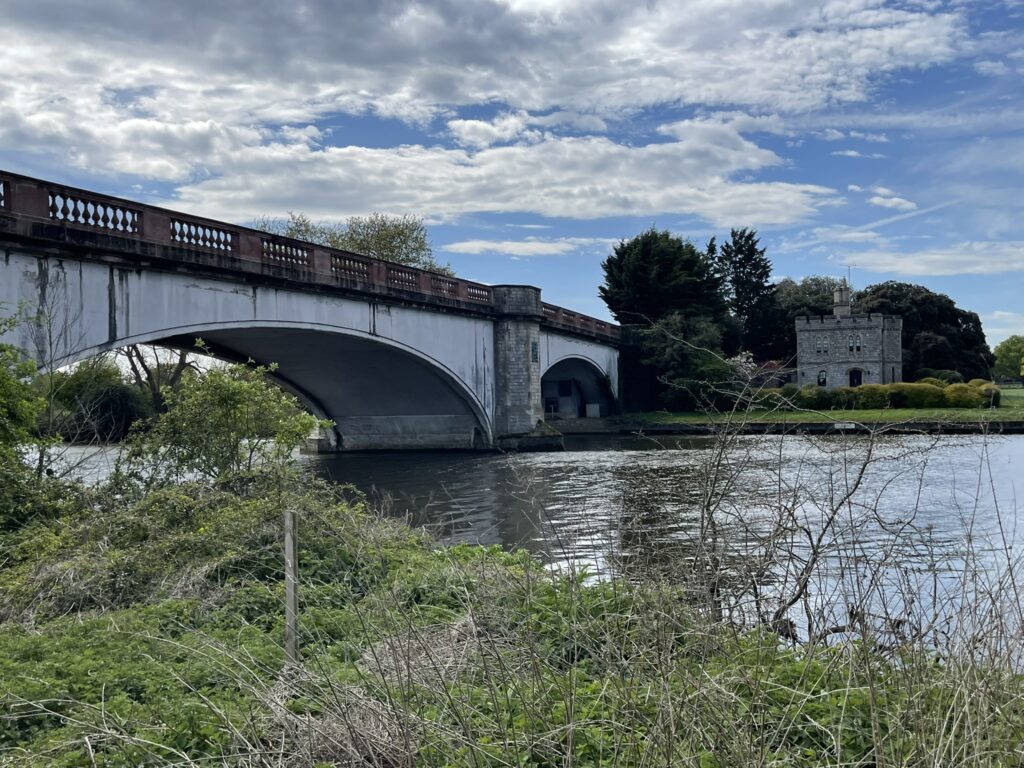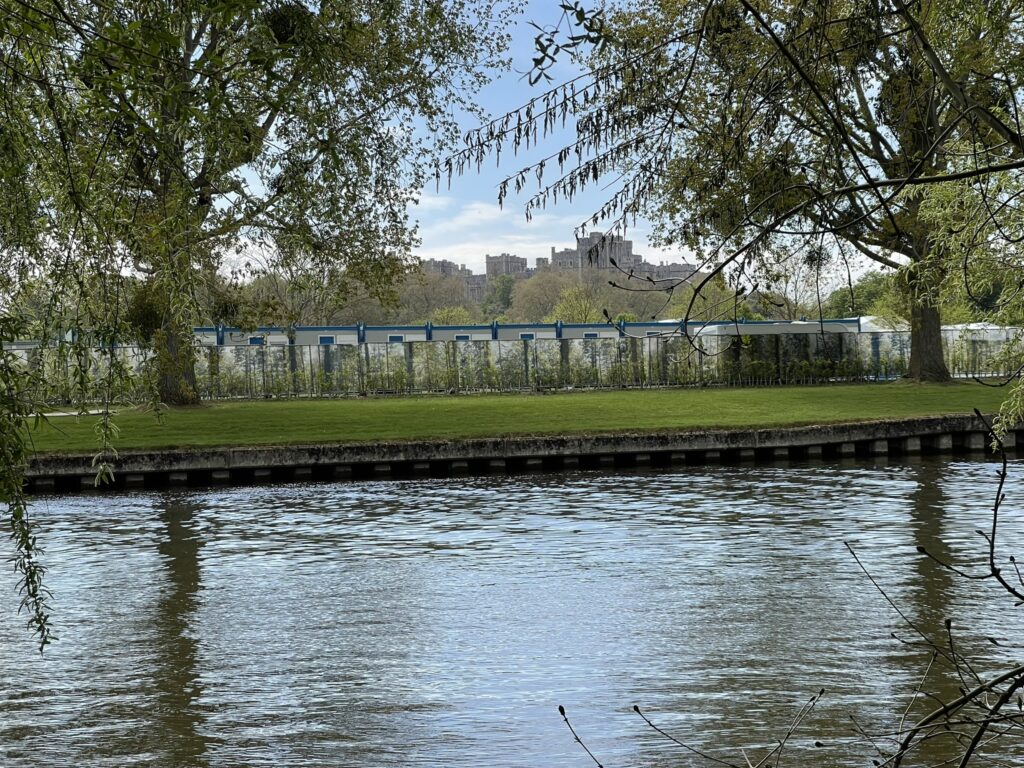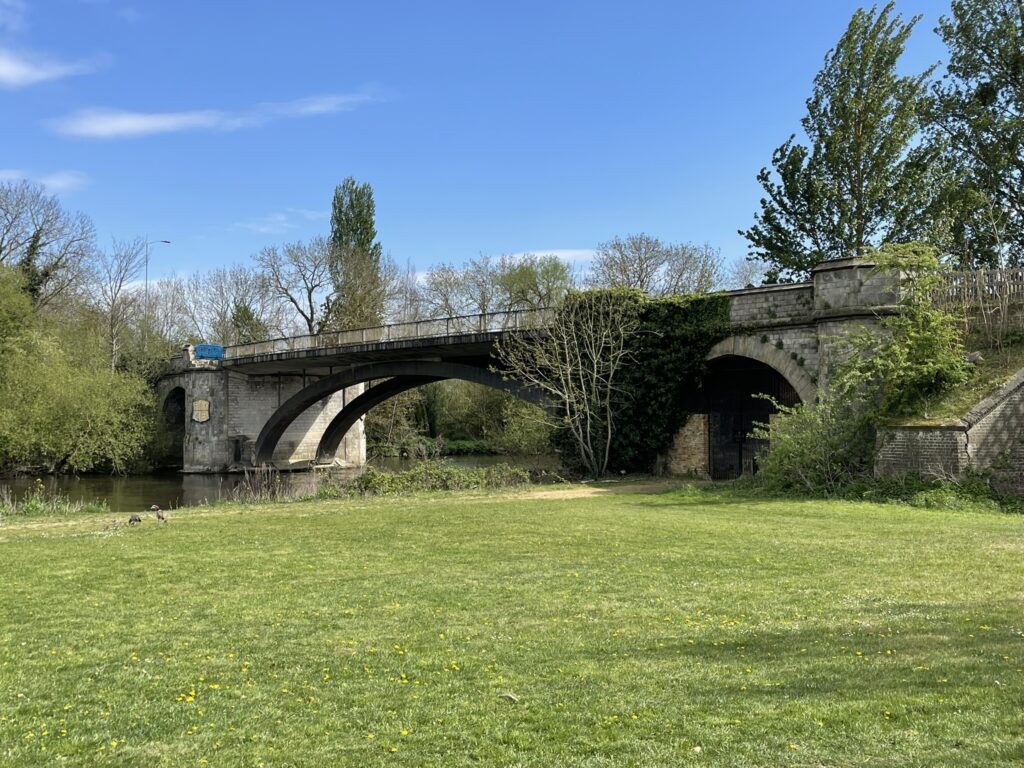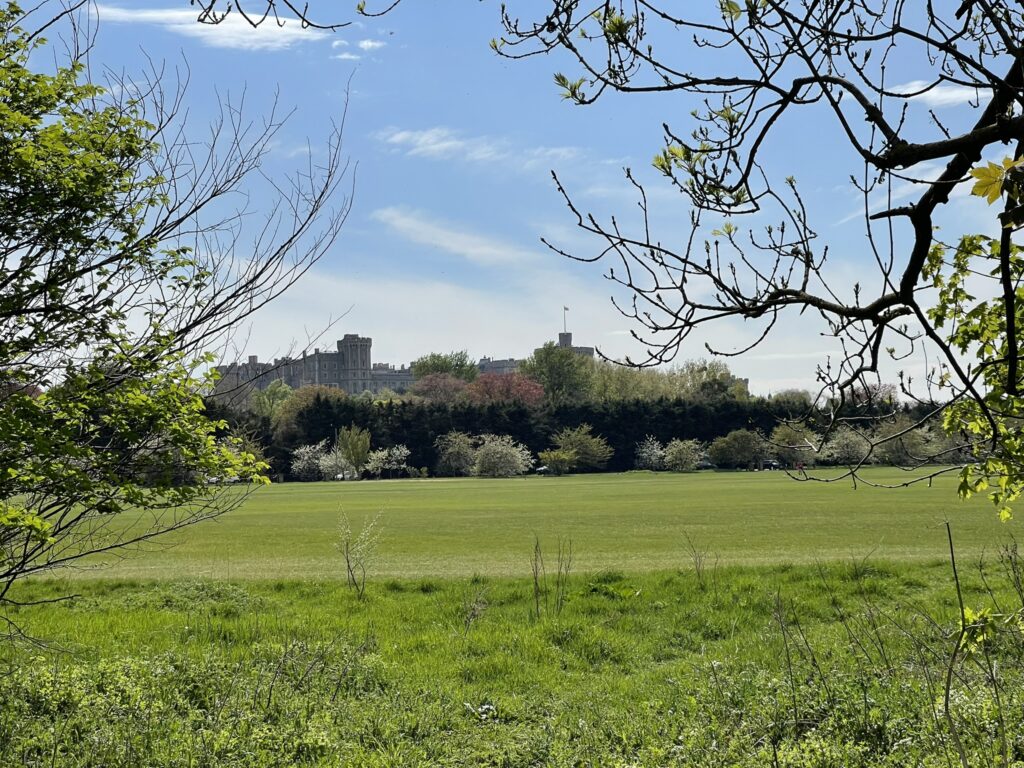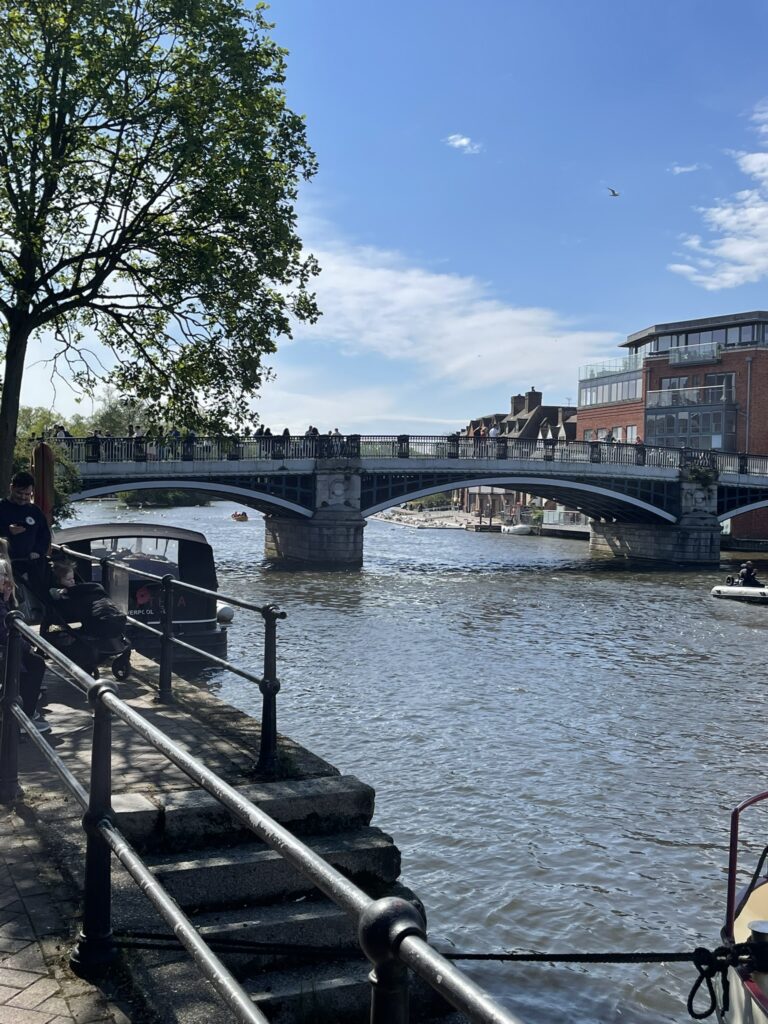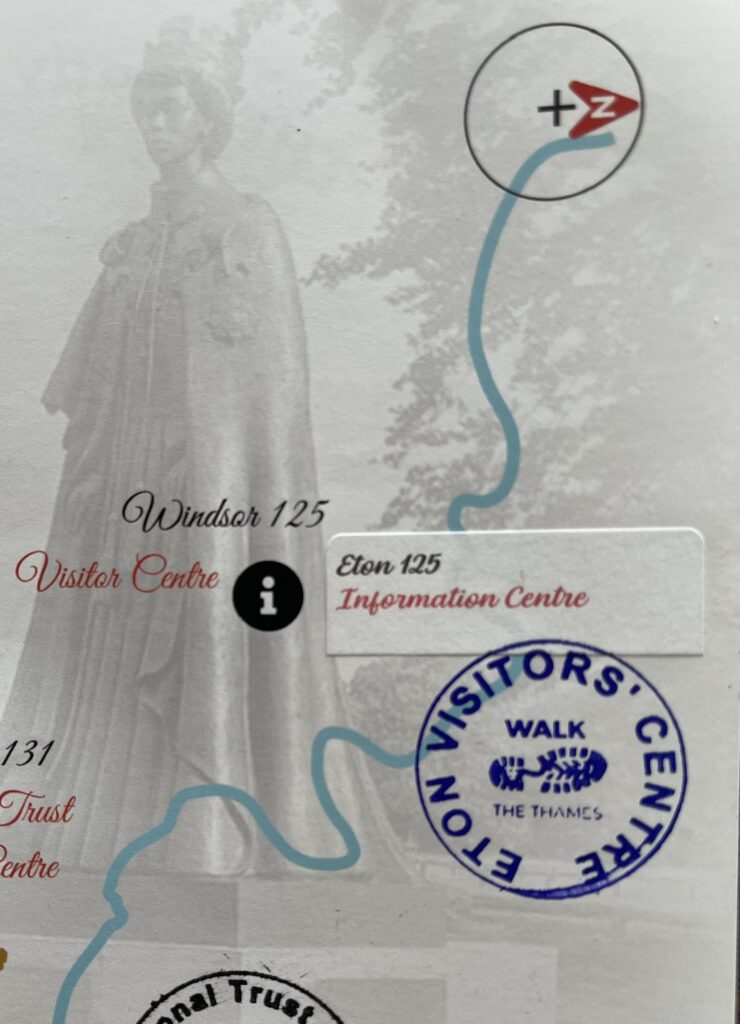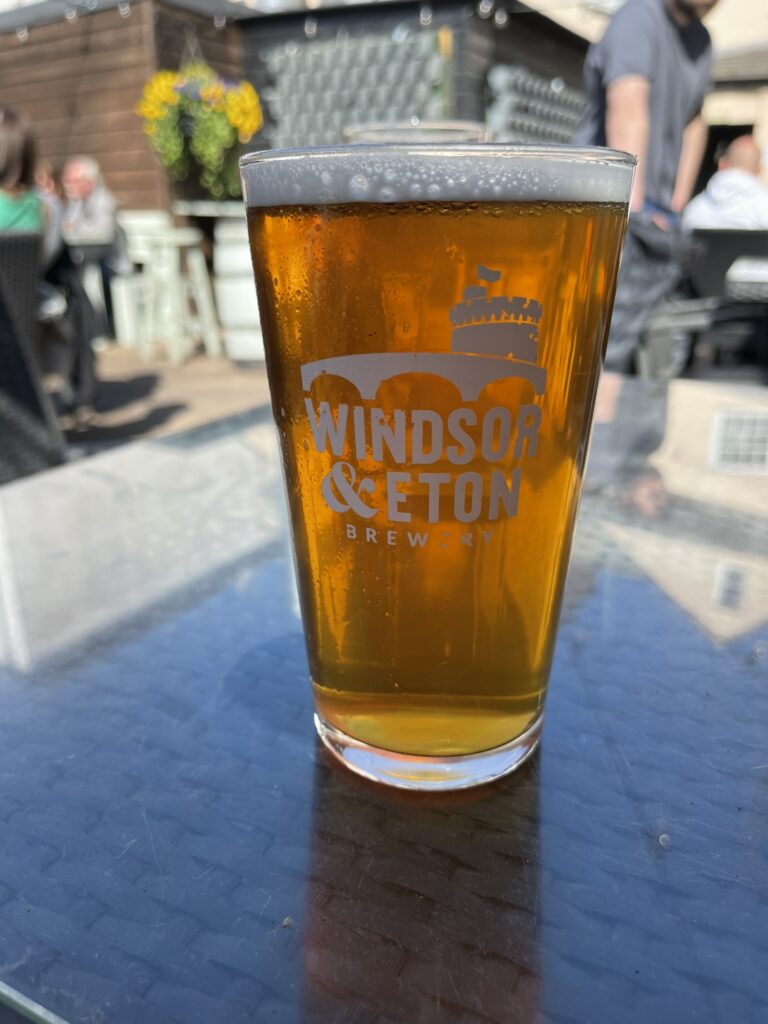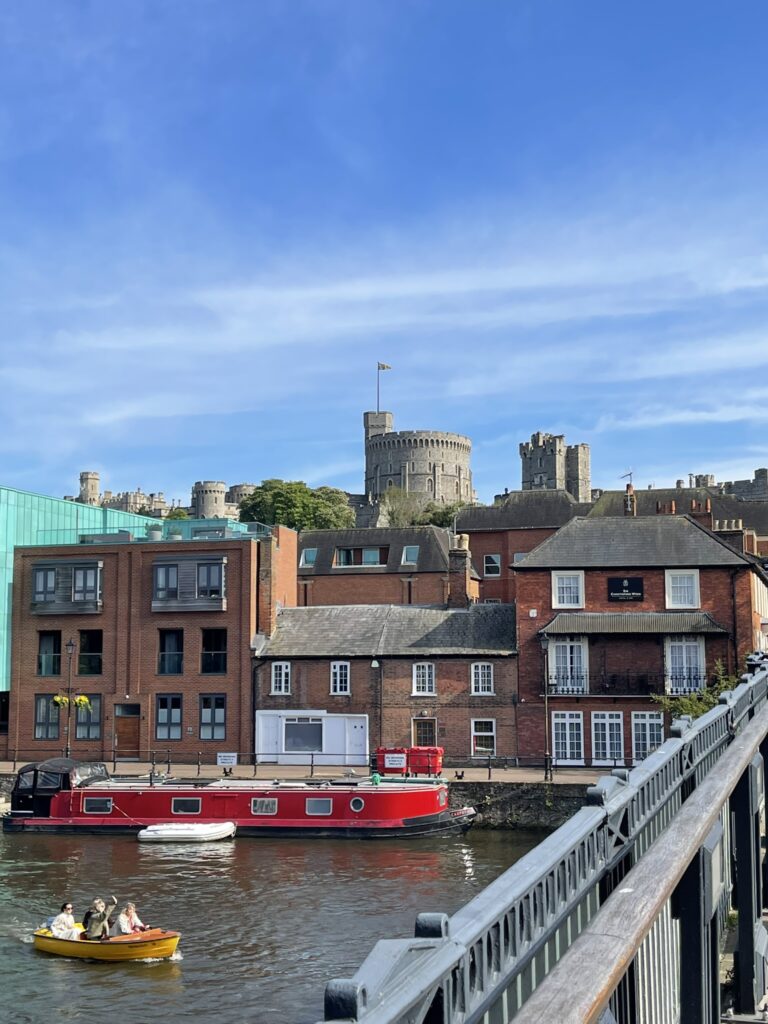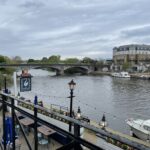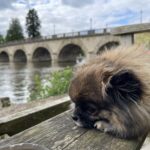Total Distance: 9.3 miles
Time: 4 hours 40 minutes
Points of Interest:
Staines Bridge
Runnymede Bridge
Bell Weir Lock
Runnymede Pleasure Grounds
Statue of Queen Elizabeth II
The Jurors artwork
John F. Kennedy Memorial
Magna Carta Monument
Old Windsor Lock
Albert Bridge
Riverside Park
Victoria Bridge
Home Park
Windsor Bridge
After a very comfortable night of sleep, we awoke to rain, but luckily it was going to clear in a couple of hours. Time to fill myself up with a good, hearty breakfast and prepare myself for another full day’s walking.
My experience at The Swan Hotel warrants particular praise. For anyone embarking on a walk along the Thames, its location is nothing short of perfect, providing a convenient and welcoming haven. The room was comfortable and clean and staff friendly. The cost of the room was £97 including breakfast, plus a £15 charge for Cher.
By the time I had breakfast and packed my bags, the rain had cleared, and we were ready to get under way. We made our way to Staines bridge. The original medieval bridge was destroyed during the civil war and was not rebuilt until the 1680’s. The current bridge was opened in 1832 by King William IV and was based on Waterloo bridge.
As I passed the bridge, a sign indicated the path ahead was closed, necessitating a diversion. This detour led us onto the A308 and beneath the M25. Subsequently, a small path returned us to the riverbank. The eventual passage under the M25 truly gave the sense of having left London.
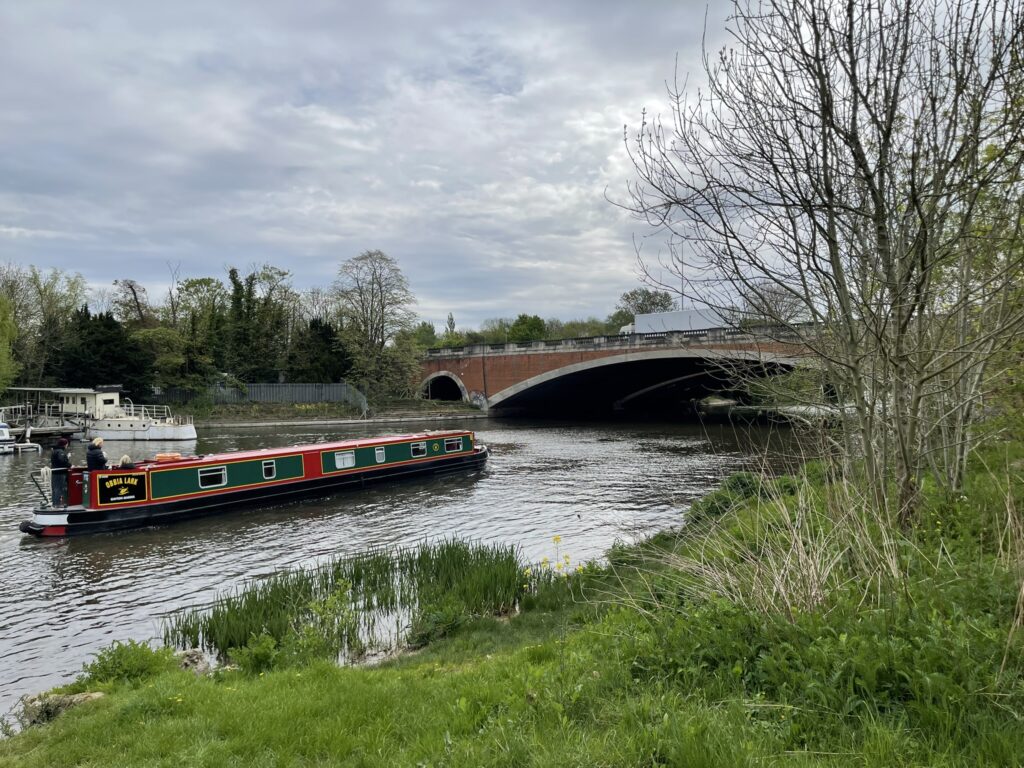
Runnymede bridge was opened in 1961 to carry the A30 Staines Bypass. The architectural treatment of the bridge was considered of great importance because of its proximity to Runnymede and the structure is finished with hand-made brick facings, white cement and Portland stone. An additional bridge was built in 1978 which runs in parallel, this carries the M25 motorway. During the development of this bridge, pottery fragments dated from 750bc were spotted by local archaeologists. These were investigated by archaeologists from the British Museum and led to the site being protected as a Scheduled Monument on 13th June 1980. The sheer volume of artefacts that were found gave a clearer picture of late Bronze Age society in the area.
Located a short walk away is Bell Weir Lock. The original lock and weir were constructed between 1817 and 1818. Disaster struck in 1827 when the weir succumbed to ice, followed by the lock’s collapse in 1866. Both were rebuilt in 1867, but the lock required reconstruction in stone by 1877. A new weir was completed in 1904. This lock and weir bear the name of Charlie Bell, a local landlord who also served as its operator.
We continued along the path, passing Runnymede boatyard and onto Runnymede pleasure ground, where we had our first rest stop. There are facilities here, including a café. In the corner of the grounds is a statue of Queen Elizabeth II. The statue stands at 4m (13ft) and shows her majesty in full Garter Robes. The statue was unveiled in 2015 to coincide with the 800th anniversary of the signing of the Magna Carta.
Before seeing the monuments at Runnymede, we headed towards the National Trust tearooms. A slice of lemon drizzle cake and a coffee helped restore energy levels. Cher was also catered for with a crunchy dog biscuit and a refreshing bowl of water. I also collected another stamp at the tearoom.
Having rested, we were prepared to discover historic Runnymede. Its most notable historical significance lies in being the location where the Magna Carta, the ‘Great Charter of Freedoms’, was sealed. This document, with its principles of democracy, limited power, equality, and freedom under the law, was sealed in 1215 by King John. The Magna Carta sought to subject England’s monarchs to the rule of law and laid the groundwork for the nation’s legal framework.
The memorial itself was erected in 1957 by the American Bar Association. It reflects the role that the Magna Carta has had on the American Bill of Rights and Constitution. Sir Edward Maufe designed the memorial. It has a rotunda decorated with American stars. A pedestal commemorates the charter, stating “Magna Carta, symbol of freedom under law.”
We move on from the memorial and onto American soil. The John F. Kennedy memorial is set in an acre of land that was given as a gift to the United States by the people of the United Kingdom. The memorial is reached by climbing 50 irregular granite steps, each one representing the 50 states in the USA. It was jointly dedicated on 14th May 1965 by Queen Elizabeth II and Jacqueline Kennedy.
Carved from a seven-ton block of Portland stone, the memorial rests upon a plinth. Its inscription features excerpts from President Kennedy’s 1961 inaugural address. Sir Geoffrey Jellicoe designed this memorial.
Also at the meadow in Ruddymead is this artwork called ‘The Jurors‘. Designed by artist Hew Locke, it was created to celebrate 800 years since the sealing of the Magna Carta. The surfaces of each chair are decorated with images and symbols representing freedom, the rule of law, and human rights.
Runnymede left a profound impression on me. Standing on that historic ground, to think about what it represents and the current state of world affairs.
And so we moved on, back to the path and along the river towards Old Windsor. We took a moment to sit by the river and reflect on the day so far. I could tell that Cher was already starting to get tired, so I popped her in her sling and we carried on.
We soon approached Old Windsor lock. The lock was built in 1822 and then extended in 1868. It was rebuilt in 1957 when hydraulic controls were fitted. Continuing upstream, we eventually came to Albert bridge, which was rebuilt in brick in 1927 to replace a cast-iron bridge built in 1850–51.
The path now crosses the bridge and continues on the other side of the Thames. The path becomes quite narrow here and winds through farmland before coming out onto the B470 road towards Datchet. We continued along this road until we reached Riverside Park, where we rested for a few minutes. Here we got our first views of Windsor Castle.
We continued on to Victoria Bridge and crossed over the river and entered Home Park, which had even better views of Windsor Castle.
We followed the path around the edge of Home Park towards Windsor Bridge. There has been a bridge on this site since the 12th century. The current bridge was started in 1822, and it opened on 1 June 1824. The bridge has three arches, each comprising seven cast iron segments, and is supported in mid-stream by two granite piers.
And so we came to our final stop, there were two more things to do, collect another stamp for my passport from the tourist information centre, and enjoy a nice cold beer after two full days of walking. Cheers!

